CrossFit has gained massive popularity in the previous decade or so. You’ll see many social media influencers practice this type of training. It’s a practice that’s suitable both for complete newbies and special forces trainees. Is that really possible? – many of us ask. If you are wondering whether CrossFit is right for you or not, I believe this article will answer the most pressing questions of yours.
CrossFit is a massively popular training program that has gained quite a controversial reputation over the years. On the one hand, it’s proven to be highly effective in building strength and burning that fat layer we all hate. On the other hand, people are worried about the injury rates of such an explosive high-intensity technique. And while both sides have a grain of truth, we’ll have to dig deeper to sort through facts and myths.
CrossFit is not a fitness regime; it’s a lifestyle.
Have you ever heard this saying? If so, you are wondering what exactly lies in the foundation of CrossFit to make it special. Let’s check, shall we?
What Is CrossFit
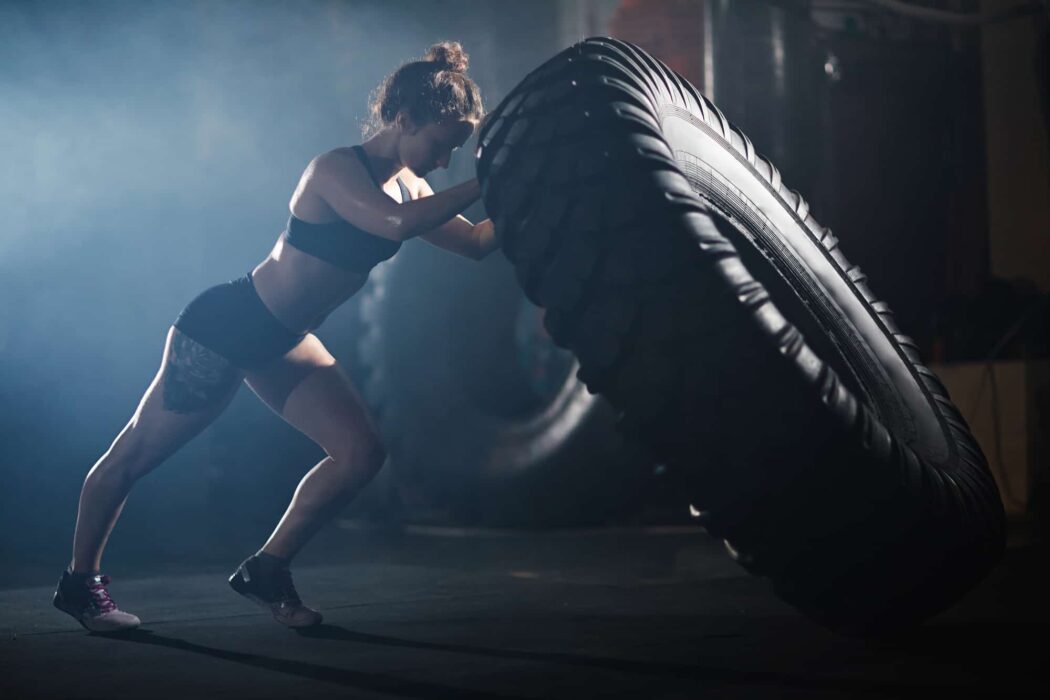
CrossFit is a training program that is varied in its (composition and constitution). The program was created [1]
to forge a broad, general, and inclusive fitness.
Its ultimate goal is to prepare an organism for random physical challenges, or as the creators call it – the unknown and the unknowable.
The training is conducted through high-intensity strength and conditioning workouts.
In the creation of the program, its founder, Greg Glassman, used a so-called “evidence-based fitness” approach focused on empirical evidence. The collected data was meant to test and ensure three fundamental facets of fitness – safety, efficiency, and efficacy. The resulting program is an “open-source community-driven” creation that employs coaches, athletes, and trainers as its co-creators.
CrossFit Objectives
CrossFit’s focus lies in the diversification of training and the correlation between fitness and health.
CrossFit encompasses a wide array of fitness domains, including:
- cardiovascular endurance
- strength
- stamina
- power
- speed
- coordination
- agility
- flexibility
- balance
- accuracy
CrossFit athletes are trained to increase performance in diverse and randomized physical challenges.
The official CrossFit manual highlights the program’s uniqueness in
its focus on maximizing neuroendocrine response, developing power, cross-training with multiple training modalities, constant training and practice with functional movements, and the development of successful diet strategies.
The CrossFit Hierarchy goes as follows:
- Diet
- Metabolic Conditioning (running, rowing, swimming, etc., a.k.a. cardio)
- Gymnastics
- Weightlifting and Throwing
- Sport (competitive atmosphere)
Each of these aspects is an integral component of the program’s efficacy.
CrossFit Movement
Unlike the traditional fitness tyles that often focus on isolation exercises, CrossFit is solely focused on compound movements and high-intensity cardio sessions. The offered combination of functional movement and anaerobic cardio brings an increase in workout effectiveness and diversifies accomplishable goals.
Examples of Crossfit Exercises

CrossFit utilizes a wide variety of exercises that target all three planes of motion. You may remember the distinction of these axes from the article about Levi Ackerman’s workout for training powerful 3D movement.
CrossFit VS HIIT: Which Is Better for You?
During CrossFit classes, you’ll go through all possible movements your body is capable of. This training regime usually combines flexion, extension, rotation, abduction, and adduction all in one workout.
The official manual lists the following exercise examples:
Biking, running, swimming, and rowing in an endless variety of drills. The clean&jerk, snatch, squat, deadlift, push-press, bench-press, and power-clean. Jumping, medicine ball throws and catches, pull-ups, dips, push-ups, handstands, presses to handstand, pirouettes, kips, cartwheels, muscle-ups, sit-ups, scales, and holds. We make regular use of bikes, the track, rowing shells and ergometers, Olympic weight sets, rings, parallel bars, a free exercise mat, horizontal bar, plyometrics, boxes, medicine balls, and jump rope.
Page 7 [1]
As you see, the mentioned exercises range greatly from simple beginner-friendly biking and running to advanced handstands and even Olympic weight sets.
However, the high intensity of the program and inclusion of technically advanced movements doesn’t mean that a beginner is encouraged to perform the same drills alongside experienced athletes. On the contrary, a well-trained CrossFit coach always has to alter workouts to suit your fitness level and keep a watchful eye on your form.
Is CrossFit Suitable for Beginners?
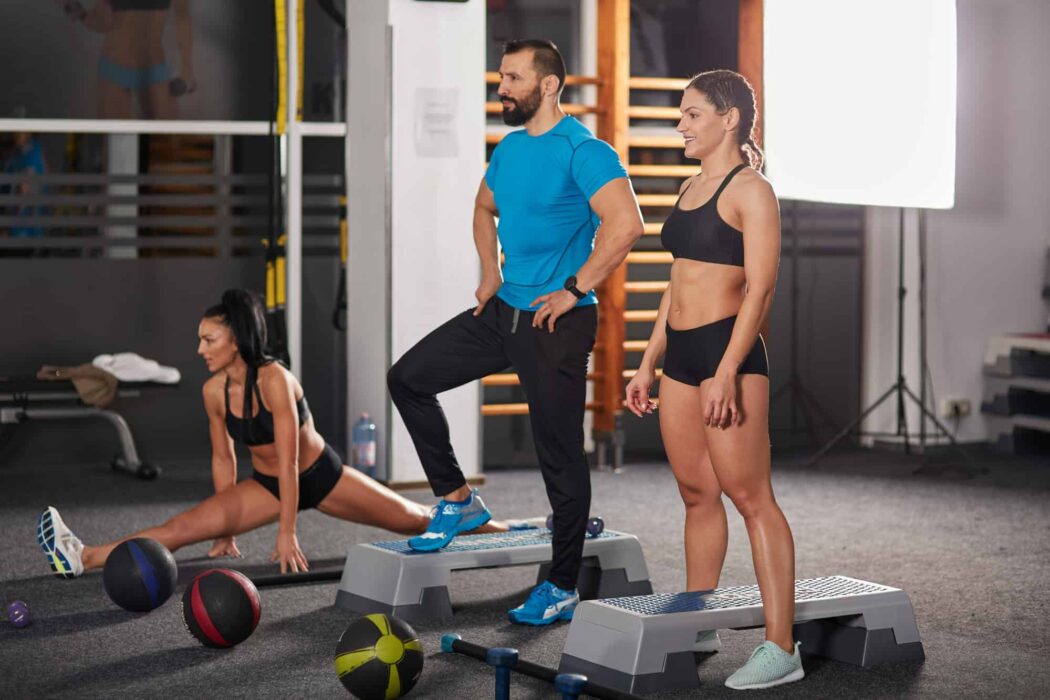
CrossFit is meant to be an inclusive, broad, and general fitness program suitable for people of all fitness levels. With that said, the recent safety concern circulating the Internet cautions beginners to adopt a safe approach to CrossFit and mind the intensity.
Overall, CrossFit highlights the versatility of the program. The official CrossFit team research shows the same level of effectiveness for professional athletes and overweight, sedentary participants.
The program varies in intensity, not style.
Angie WOD: Setup, Safety, and Scaling
Besides, the basic principle of the program is when it goes longer than an hour, the more is not better. Most CrossFit training classes last for only 45 minutes (including stretching, warm-up, and drills) which is the perfect starting point for people at the start of their fitness journey. The recommended norm for beginners is to start CrossFit workouts three days a week [2]. Later, you can increase the number of days to four, five, and even six for the professional level.
As I’ve mentioned, a CrossFit trainer has a wide variety of exercises in their “toolkit.” Thus, creating a workout suitable for the attending people is easily achievable. On that note, you’ve already guessed that a beginner should always train with a coach. Unfortunately, this is not a training program that can be mastered on your own if you are not a professional athlete.
Choose Your Training
Newbies have two options:
- train with a personal CrossFit coach
- train in small groups supervised by professionals
Of course, the first option is ideal. Your coach devotes all their attention to your form, how you perform the workout and creates a personal schedule. However, for most people, this is an unaffordable luxury.
And here’s where group training comes into play. You find numerous private CrossFit gyms all over the world. With the recent popularity of this training style, there is at least one in most cities.
The main rule you should follow is finding a professional, knowledgeable trainer who’d pay attention to all its clients. Proper guidance is the key!
What to Expect From Your First CrossFit Class?
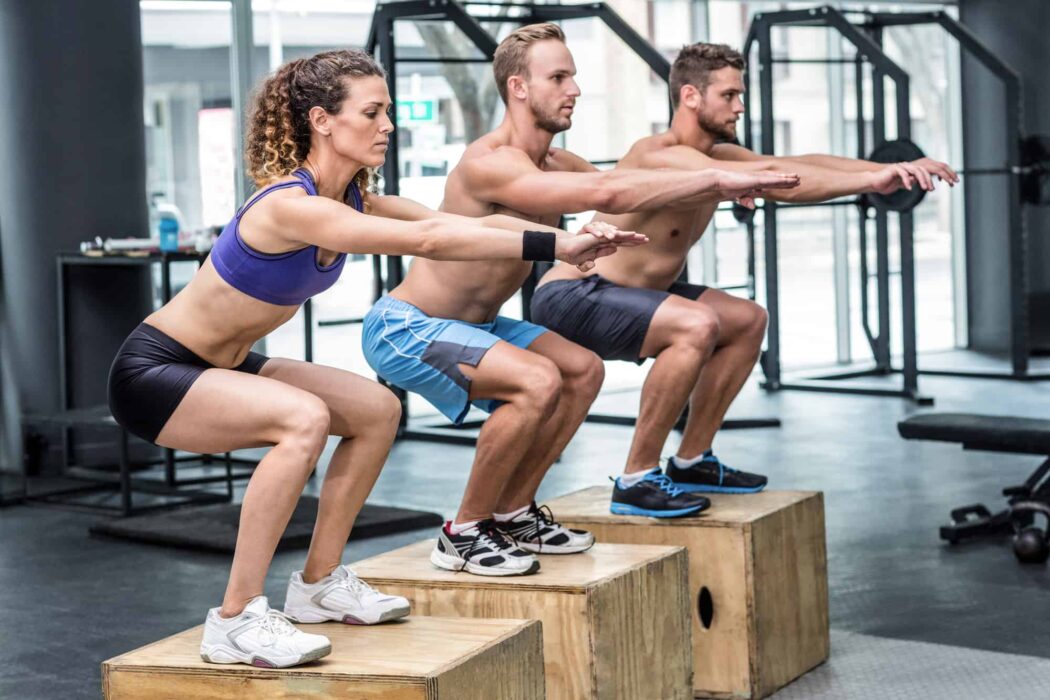
Well, now you are sitting in your car in anticipation of your first CrossFit class. Your mind is probably blank. Having no idea what to expect. You don’t want to make a fool of yourself but attracting all the attention during training seems like the worst idea. That’s understandable!
Thus, most people would like to be prepared for the first CrossFit session and know what to do!
Proceed as follows!
- You’ll be introduced to the coach by whoever signs you for class! Often, you’ll talk to them before the class even begins! Don’t fret; the trainer will know that you are a newbie and will pay extra attention to you the first few times.
- Try to find a specialized “onramp” class. Such classes are all catered to newbies and teach the basic movement. Here, everybody will be as clueless as you are, and a coach will explain everything in detail.
- Now to the actual process! Everybody starts with changing their clothes to something CrossFit appropriate – sportswear that is comfortable and not too tight.
- The initial 5-15 minutes are a warm-up.
- Then, a coach explains the workout of the day, the number of reps, technique tips, and so on. 3, 2, 1, GO!
- As you begin the workout, the trainer will check upon your form and correct it if necessary.
- A workout ends with a collective session of stretching.
Be sure to bring your water bottle and a towel. Some protein-rich snacks right after class can enrich your energy.
Murph WOD: Setup, Safety, and Scaling
It’s a common belief that a CrossFit class will put you down to your knees at the end of the high intensity. And while you definitely feel like a wrack the moment you finish the workout, a few minutes of stretching will calm you down and allow you to feel that rush of post-workout endorphins that make all the effort worth it!
What Risks Come With Crossfit?

Despite all the effort of CrossFit creators to promote health and improve general performance, this training program has gained quite an “injury-prone” reputation.
A Wide Injury Pallette
The dangers of such a high-intensity fitness regimen are two-fold.
Firstly, the exercises themselves require proper form and techniques; and the CrossFit rush to do everything faster and better can lead to any number of injuries. Neglecting to keep exercises safe in favor of completing a circle faster or doing more reps is what often leads to negative consequences.
The second factor is doing intensive exercises when fatigued. As you are far from completing the circuit but already can’t stand firm and are all wobbly, the risk increases even further.
The severity of possible injuries depends on the type of exercises you’ve been doing at the moment.
Injury Rate Research
A rare but possible muscle injury you should be aware of is called rhabdomyolysis. The condition prevails amidst explosive high-intensity sport. It’s characterized by the rapture of skeletal muscle tissues and pollution of the bloodstream, which can lead to kidney failure. This is a life-threatening condition that is treatable only in medical facilities. A study of 2019 [3] reports 11 cases of CrossFit related rhabdomyolysis, but the research lacks proper statistics, and the data should be reviewed with caution.
Helen WOD: Setup, Safety, and Scaling
A 2013 study [4] conducted by the Journal of Strength and Conditioning Research set its sights on discovering the rates of injuries in CrossFit. It’s taken a survey approach on the matter and sent online questionnaires to online CrossFit communities. Overall, among the 132 responses received, 73,5% reported sustaining an injury during training. Most of the injuries were mild, with only 7% requiring surgical intervention. No cases of rhabdomyolysis, though!
The calculated injury rate [5] – 3.1 per 1000 hours trained.
Another 2013 study conducted by the University of Rochester found that the average injury rate among Crossfit participants was 19,4%. The areas suffering most frequently are:
- shoulder
- low back
- knee
Shoulders were injured most often during gymnastics exercises; the other two were during weightlifting. None of the participants reported prior injuries and pains in the areas.
Upon further inspection [6], the involvement of coaches reduced the percentage of injuries.
Coaching
Another danger lies not in an injury itself but in the coaches. Unfortunately, you may stumble upon poorly-qualified trainers even if they come with a shiny certificate. The sad truth is that it concerns more coaches than I’d like to hear.
Even the certification courses offered by the official CrossFit website [7] last a whopping….2 DAYS! Imagine how much you can learn two just two days of training? Not much.
Prerequisites? None.
This issue is a significant reason why CrossFit’s bad reputation is justifiable in some instances. The key is to find a knowledgeable, attentive coach.
How to Avoid Injuries?
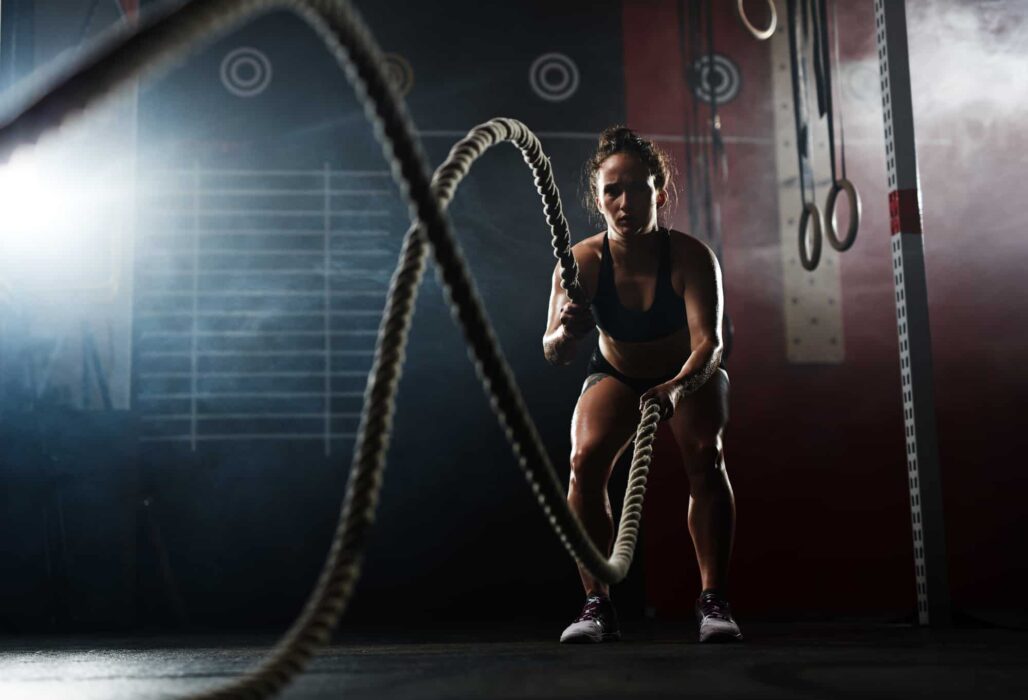
Alright, now that we know that injuries can and do happen in CrossFit, you should also take your time learning all the precautions to minimize the risks! There are some rules that’ll help with the task.
Grace WOD: Setup, Safety, and Scaling
Minimizing Risks
Foundation of Physiotherapy and Wellness [8] recommends the following steps to minimize the risk of injuries.
- One of the most important rules is to start slow and generally increase the intensity of a workout. Thus, you should never skip warm-ups even if you are late for the class (try to always be on time anyway!)
- Drink plenty of water. This is why I’ve mentioned you should take a bottle with you! I know that you may have seen certain CrossFit YouTubers go without water the entire hour, but that is a poor example.
- Dedicate time to improving your technique. For this purpose, you can choose the Onramp course that focuses solely on proper movements. Otherwise, make sure to ask a coach whether your form is correct.
- Find a professional coach. Considering the certification issues I’ve mentioned above, finding the right coach becomes of utmost importance for avoiding injuries in the future.
- Don’t rush when you become tired. Fatigue brings you sloppiness. When you feel too tired, take a minute of rest or slow your movements to be more mindful.
- Improve flexibility and mobility. You’ll be surprised how important they are for proper movement in calisthenics and weight lifting. If you want to prepare for your first CrossFit workout, you can work on mobility and flexibility at home.
- Progressive overload. This may seem like an obvious step, but it should be noted anyway. When you are working out alongside more experienced people, you subconsciously want to increase the load. You should be comfortable working with the weights that suit your level; the CrossFit community never judges. Note that both weight and volume should be increased over time.
- Proper rest. Resting between workout sessions is crucial for the full recovery of muscles and their proper work and technique for the next CrossFit training.
What Are the Benefits of Crossfit?
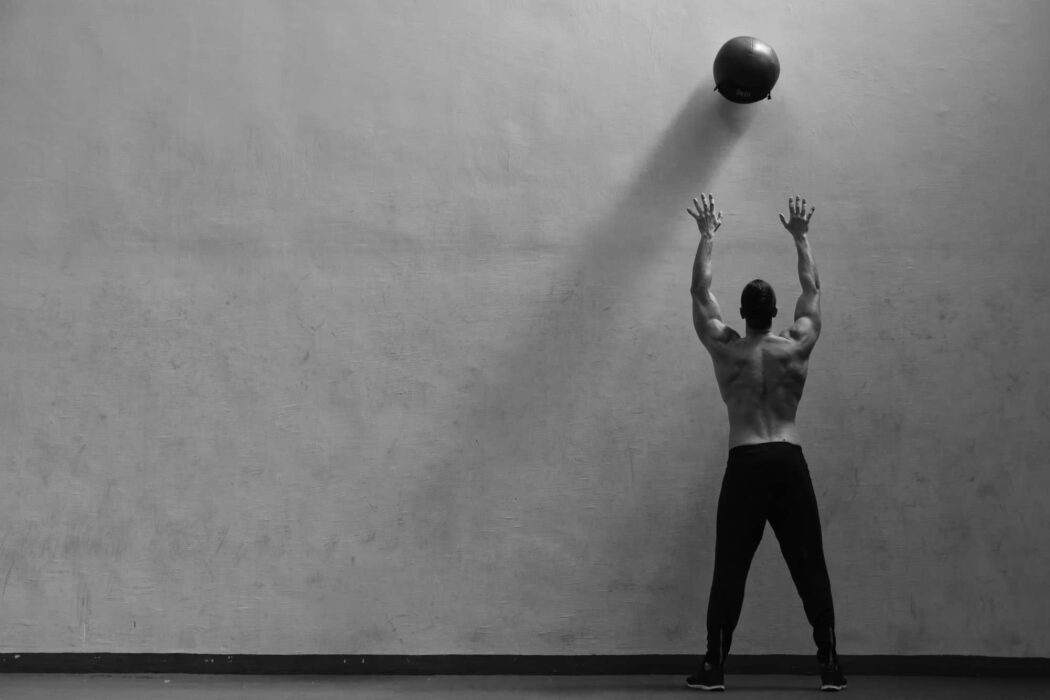
Still not sure that Crossfit is for you? Understandable.
Nevertheless, I’ll mention some of the benefits that may encourage you to try it before deciding!
Cindy WOD: Setup, Safety, and Scaling
According to a comprehensive review of CrossFit [9] and its effects published in the US National Library of Medicine, the studies conduction on the matter show the following positive results:
Some of those recent studies showed that CrossFit training could be practical for the improvement of several physical fitness parameters as enhanced endurance, increased maximal aerobic capacity VO2max, aerobic and anaerobic capacity, and a positive influence on participants’ body composition, strength, flexibility, power and balance, BMI, fat mass and waist circumference, not only in adults, also in adolescents.
Body Composition
One of the glaring benefits of CrossFit is body recomposition. The studies showed a reduction of fat mass and waist circumference, as well as healthier MBIs. The positive effects of this type of fitness on the visual aspects of our bodies lead many beginners to this type of working out.
Anecdotal evidence shows massive support on just how well CrossFit helps to lose weight and build muscle in its place.
Such effectiveness in reducing body fat percentage is contingent on the high intensity of compound full-body exercises that burn calories fast and effectively. As soon as you boost your daily energy expenditure, your body burns fat to get the required energy. You can check the graphs and statistics on how CrossFit affects body composition in young, healthy adults in this illustration [10].
You can find the basics of body composition and how to change it in my previous article about The Daily Expenditure Calculator.
Flexibility
A comprehensive study conducted in 2019 [11] that reviews the previous independent results mentions improved flexibility and mobility as positive results of CrossFit.
Which Yoga Is Best For Flexibility?
As each CrossFit workout includes a short stretching and flexibility session, even “the stiffest” people improve in these aspects as they continue training. Gentle stretching sessions either before or after a circuit are conducted not with the sole purpose of being flexible but to prevent injuries during the workouts. Stretched muscles can better perform movements and don’t restrict the proper technique.
Balance
As CrossFit mainly focuses on compound functional movements, it takes great coordination to keep performing powerful exercises in such an intense manner. Therefore, the previous study I’ve mentioned takes a look at the balance aspect as well. Study results show significant improvement in complex performance, including dynamic balance as you train your body to withstand and empower motions.
Aerobic and Anaerobic Capacity
Such high-intensity power training as CrossFit is dedicated towards increasing VO2 max – the volume of oxygen your body can utilize during training.
The findings of this study [12] show development of aerobic and anaerobic capacity after a prolonged CrossFit training regime. Interestingly, you can find the detailed review of injury risk in the abstract as well.
Linda WOD: Setup, Safety, and Scaling
In its official guide, CrossFit creators also highlight the inclusion of both aerobic and anaerobic activities in their training regime. CrossFit balances both to keep the well-rounded approach and reap the benefits of both. Here, you’ll find the features of both on page 8 [1]. In short, aerobic movements are best for the cardiovascular system and decrease body fat; anaerobic, in addition, dramatically improves power, speed, and strength.
What Crossfit Terminology Should You Know
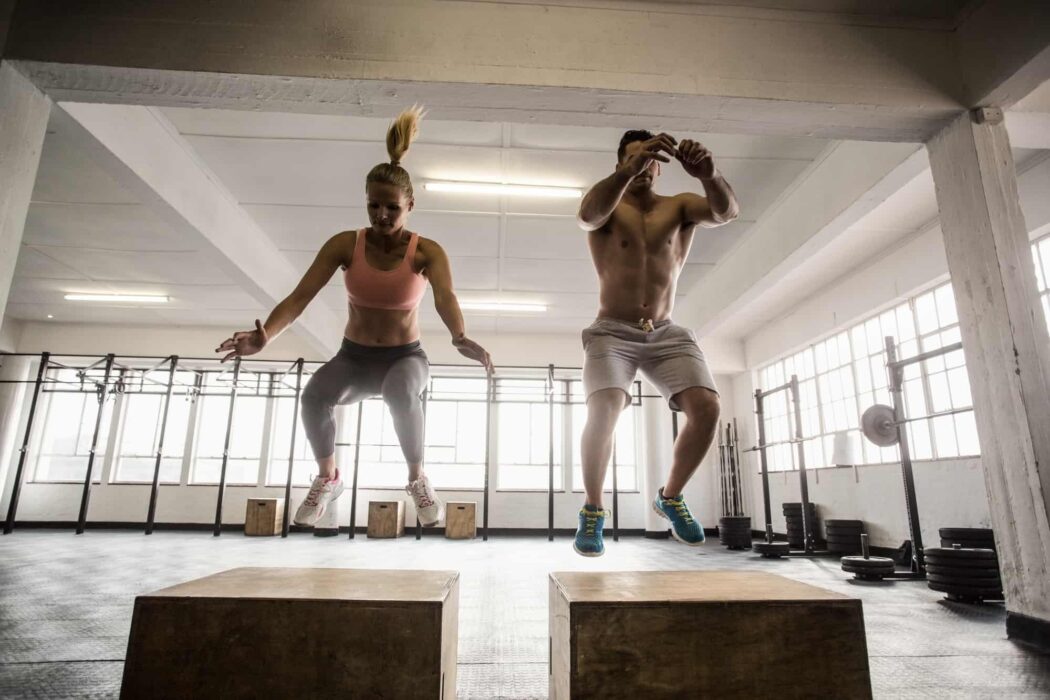
I’ve tried to avoid the specific CrossFit terminology in the beginning to give you a proper look at what it is and whether you want to try it. Now, the time has come to dive deep into the terms [13] that you’ll hear at CrossFit sessions all the time.
P.S. You’ll need some time to remember all of them and know what to do without a second thought.
WOD – workout of the day. This is arguably the most important term you’ll have to remember. You’ll be given certain circuits for each of your training sessions. This will be your workout of the day. You can find in-depth information about what WOD is in my next article.
AMRAP – as many reps/rounds as possible.
For Time – doing a round as fast as possible. You’ll be asked to measure the time required for a specific circuit to raise a competitive side of the group.
Scaling – adjusting the complexity of a round either by increasing weights of reps number.
Rx’D – doing the circuit as specified/without adjustments.
MetCon – metabolic conditioning workout.
BW/BWT – bodyweight.
KB – kettlebell.
DB – dumbbell.
WB – wall ball.
PR – a personal record.
Exercise Abbreviations
C&J – clean and jerk
GHD – glute and ham developer
HSPU – handstand push-up
BP – bench press
DL – deadlift
SQ – squat
FS – front squat
BS – back squat
HSQ – hang squat
PP – push press
PU – pull-ups/push-ups (watch for context)
TGU – Turkish get-up
TTB – toes to bar
What Diet Is Better for CrossFit?

Lately, the CrossFit community has been massively trying the Paleo diet, but such a strict diet plan may not be suitable for everybody. And although CrossFit can quickly evolve from fitness to lifestyle, the individual aspects of a healthy diet have to be discussed with a certified nutritionist.
And the issue comes from the official CrossFit Manual [1] that suggests Paleo as the perfect diet for a CrossFitter. The main argument is to switch to the “caveman” diet because that is what our bodies are meant to consume naturally.
Modern diets are ill-suited for our genetic composition. Evolution has not kept pace with advances in agriculture and food processing resulting in a plague of health problems for the modern man. The Caveman model is perfectly consistent with the Crossfit prescription.
The issue can be found in the statement itself. Copying a caveman diet? Hardly possible nowadays.
Best Stationary Bikes with Moving Arms in 2022
The article published on Harvard’s School of Public Health website [14] highlights the great distinction in foods available to us and growing thousands of years ago. However, the mentioned agricultural development has changed the composition of foods drastically.
Another issue comes in an inability to determine the correct list of products and the distinction between different regions.
Long-term, a Paleo diet may be associated with several health problems for the cardiovascular system, the chance of diabetes, and so on.
Thus, you have to consult a certified nutritionist to choose and monitor which way of healthy dieting is suitable specifically for you!
Today, the official CrossFit website suggests a Zone Meal plan on their nutrition page. Check it here [15]. You can consult with a specialist whether it’s suitable for you or make some adjustments.
Conclusion: Is CrossFit Worth It?
Overall, CrossFit has become a somewhat contradictory topic among fitness enthusiasts. Some swear by it; others are afraid of injuries. Unfortunately, as we see from the CrossFit study overview, there is still little research done in terms of injury risks and rates. The anecdotal survey shows a high risk of shoulder and back injuries; the controlled studies reveal smaller percentages of injuries, most of which are minor.
All in all, I wish I could with certainty tell you whether you’ll be safe practicing CrossFit or not. But, unfortunately, this is not possible. As with many sports and intense fitness regimes, CrossFit comes with its risks. The best you and I can do is learn everything about minimizing injury risks and consulting with a top-notch trainer. The latter may be harder to do than finding a professional yoga instructor. However, such an explosive fitness regime should be taken with utmost care. After all, your health is crucial.
As for your first CrossFit class, rest assured that a good coach will spend it paying extra attention to you, judging your form, and explaining the proper techniques. If you see that they don’t follow this route, switch your CrossFit gym!
I hope I’ve managed to answer all the most important questions you may have about CrossFit, at least the fundamental issues of interest to all beginners. Further, I’ll continue reviewing various WODs and other CrossFit elements to offer the complete picture of what to expect from this fitness regime.
Sources:
- The CrossFit Training Guide – (crossfit.com)
- How many times per week should I do a CrossFit WOD? – (2018, crossfitzeeburg.com)
- CrossFit and rhabdomyolysis: A case series of 11 patients presenting at a single academic institution – (2019, National Library of Medicine – Journal of Science and Medicine in Sport, jsams.org)
- CrossFit Review – (webmd.com)
- The nature and prevalence of injury during CrossFit training. – (2013, Europe PMS – Journal of Strength and Conditioning Research; DOI: 10.1519/jsc.0000000000000318)
- Injury Rate and Patterns Among CrossFit Athletes – (2014,
Orthopaedic Journal of Sports Medicine; doi.org/10.1177/2325967114531177) - CrossFit Level 1 Certificate Course – (2021, crossfit.com)
- CrossFit 101: What is CrossFit and How to Avoid Injuries (2021, Foundation Physiotherapy & Wellness, foundationphysio.com)
- CrossFit® – Development, Benefits and Risks – (2020,
US National Library of Medicine – Sportorthopa die-Sporttraumatologie; PMC7473349) - CrossFit Training Improvements in Sport Performance and Body Composition in Young Healthy Adults – (2012, wisc.edu)
- The benefits and risks of the high-intensity CrossFit training – (2019, Sport Sciences for Health; doi.org/10.1007/s11332-018-0521-7)
- CrossFit® – Development, Benefits and Risks – (2020, US National Library of Medicine – Sportorthopa die-Sporttraumatologie; doi: 10.1016/j.orthtr.2020.07.001)
- CrossFit Terminology – (First City CrossFit Monterey, CA)
- Diet Review: Paleo Diet for Weight Loss – (Harvard School of Public Health, hsph.harvard.edu)
- The CrossFit Journal – Zone Meal Plans – (2015, CrossFit Journal)
 Fact checked by
Fact checked by